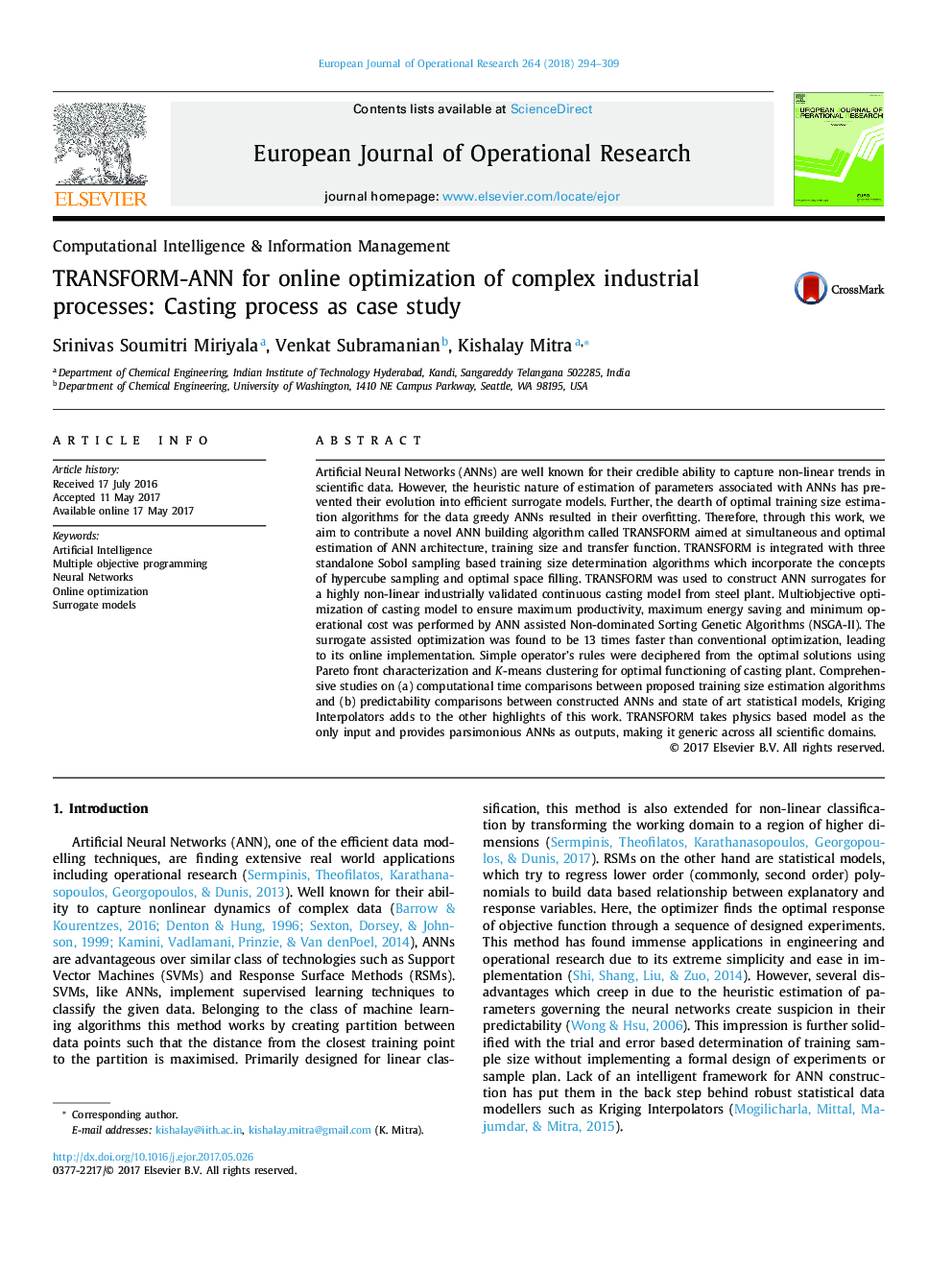| Article ID | Journal | Published Year | Pages | File Type |
|---|---|---|---|---|
| 4959458 | European Journal of Operational Research | 2018 | 16 Pages |
â¢Novel Neural Network building algorithm for application in operational research.â¢It enables optimal estimation of architecture, transfer function and training size.â¢3 methods for size estimation by hypercube sampling and optimal space filling.â¢Casting model from steel plants-surrogate assisted optimization is 13 times faster.â¢Comparison with Kriging and Pareto characterization with K-means clustering.
Artificial Neural Networks (ANNs) are well known for their credible ability to capture non-linear trends in scientific data. However, the heuristic nature of estimation of parameters associated with ANNs has prevented their evolution into efficient surrogate models. Further, the dearth of optimal training size estimation algorithms for the data greedy ANNs resulted in their overfitting. Therefore, through this work, we aim to contribute a novel ANN building algorithm called TRANSFORM aimed at simultaneous and optimal estimation of ANN architecture, training size and transfer function. TRANSFORM is integrated with three standalone Sobol sampling based training size determination algorithms which incorporate the concepts of hypercube sampling and optimal space filling. TRANSFORM was used to construct ANN surrogates for a highly non-linear industrially validated continuous casting model from steel plant. Multiobjective optimization of casting model to ensure maximum productivity, maximum energy saving and minimum operational cost was performed by ANN assisted Non-dominated Sorting Genetic Algorithms (NSGA-II). The surrogate assisted optimization was found to be 13 times faster than conventional optimization, leading to its online implementation. Simple operator's rules were deciphered from the optimal solutions using Pareto front characterization and K-means clustering for optimal functioning of casting plant. Comprehensive studies on (a) computational time comparisons between proposed training size estimation algorithms and (b) predictability comparisons between constructed ANNs and state of art statistical models, Kriging Interpolators adds to the other highlights of this work. TRANSFORM takes physics based model as the only input and provides parsimonious ANNs as outputs, making it generic across all scientific domains.
Graphical abstractDownload high-res image (196KB)Download full-size image
